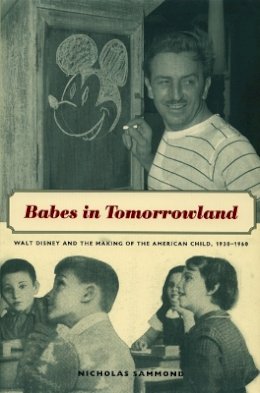
Babes in Tomorrowland: Walt Disney and the Making of the American Child, 1930–1960
Nicholas Sammond
In vivid detail, Sammond describes how the latest thinking about human development was translated into the practice of child-rearing and how magazines and parenting manuals characterized the child as the crucible of an ideal American culture. He chronicles how Walt Disney Productions’ greatest creation-the image of Walt Disney himself-was made to embody evolving ideas of what was best for the child and for society. Bringing popular child-rearing manuals, periodicals, advertisements, and mainstream sociological texts together with the films, tv programs, ancillary products, and public relations materials of Walt Disney Productions, Babes in Tomorrowland reveals a child that was as much the necessary precursor of popular media as the victim of its excesses.
Product Details
About Nicholas Sammond
Reviews for Babes in Tomorrowland: Walt Disney and the Making of the American Child, 1930–1960
